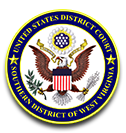Motion Practice
- Motions and Supporting Memoranda.
- General. All motions shall be concise, state the relief requested precisely, and be filed timely but not prematurely. Copies of depositions (or pertinent portions thereof), admissions, documents, affidavits, and other such materials or exhibits upon which the motion relies shall be attached to the motion, not the supporting memorandum.
- Length. A memorandum of not more than 20 pages in length must accompany the following types of motions: (1) to intervene; (2) to transfer; (3) to vacate; (4) to reconsider; (5) for rehearing; (6) for attorney fees; (7) for clarification; (8) to realign parties; (9) to consolidate; (10) to recuse; (11) to dismiss; (12) to remand; (13) for summary judgment; (14) for sanctions; (15) for default judgment; (16) for declaratory judgment; (17) to compel arbitration; (18) for injunctive relief or for a temporary restraining order; (19) for a new trial, to reconsider or to alter or amend judgment; (20) to reinstate or reopen a civil action; (21) to substitute a party; (22) to stay; (23) to seal; or (24) to show cause.
In addition to these motions, the court has discretion to direct a movant to submit a memorandum to accompany any other type of motion. If a movant deems appropriate, a memorandum of not more than 20 pages in length may accompany any other type of motion even if not required by this rule or the court. Any response and reply memoranda shall adhere to the same page limitation.
Motions to exceed the page limitation will be denied absent a showing of good cause.
If a memorandum is not submitted as required by this rule or by the court, the motion will be denied without prejudice.
- Paper Size, Line Spacing and Margins. All memoranda must be on 8.5 by 11 inch paper. The text must be double-spaced, but quotations more than two lines long may be indented and single-spaced. Headings and footnotes may be single-spaced. Margins must be at least one inch on all four sides. Page numbers may be placed in the margins, but no text may appear there.
- Typeface and Type Styles. Either a proportionally spaced or monospaced face may be used. A proportionally spaced face must be 12-point or larger. A monospaced face may not contain more than 102 characters per inch. The font must be clearly legible as determined by the judicial officer to whom the motion is addressed. The following fonts are presumed legible: Times New Roman, Courier New, Arial, Century Gothic, Garamond, Georgia, and Century Schoolbook.
- Courtesy Copies of Memoranda. When electronically filing documents with the clerk's office, a paper courtesy copy to the assigned judicial officer is not required except where any motion, memorandum, response, or reply, together with documents in support thereof, is 50 pages or more in length, or where any administrative record is 75 pages or more in length.
- Motions to Dismiss. Motions to dismiss shall be filed as a separate pleading.
- Filing Deadlines for Response and Reply Memoranda. Memoranda and other materials in response to motions shall be filed and served on opposing counsel and unrepresented parties within 14 days from the date of service of the motion. Any reply memoranda shall be filed and served on opposing counsel and unrepresented parties within 7 days from the date of service of the memorandum in response to the motion. Surreply memoranda shall not be filed except by leave of court. These times for serving memoranda may be modified by the judicial officer to whom the motion is addressed.
- Referral to Magistrate Judge. Non-dispositive discovery and pretrial motions relating to discovery practice are referred to a magistrate judge unless otherwise ordered by the district judge assigned to the case. All other non-dispositive motions and any dispositive motion may be referred to a magistrate judge by the district judge assigned to the case.
- Courtroom Technology: If any courtroom technology is required for a hearing, counsel must request any such technology by filing a certification that the court=s technology staff has been notified. The certification regarding such notification shall be filed with the clerk no later than 7 days before the scheduled commencement of the hearing.
